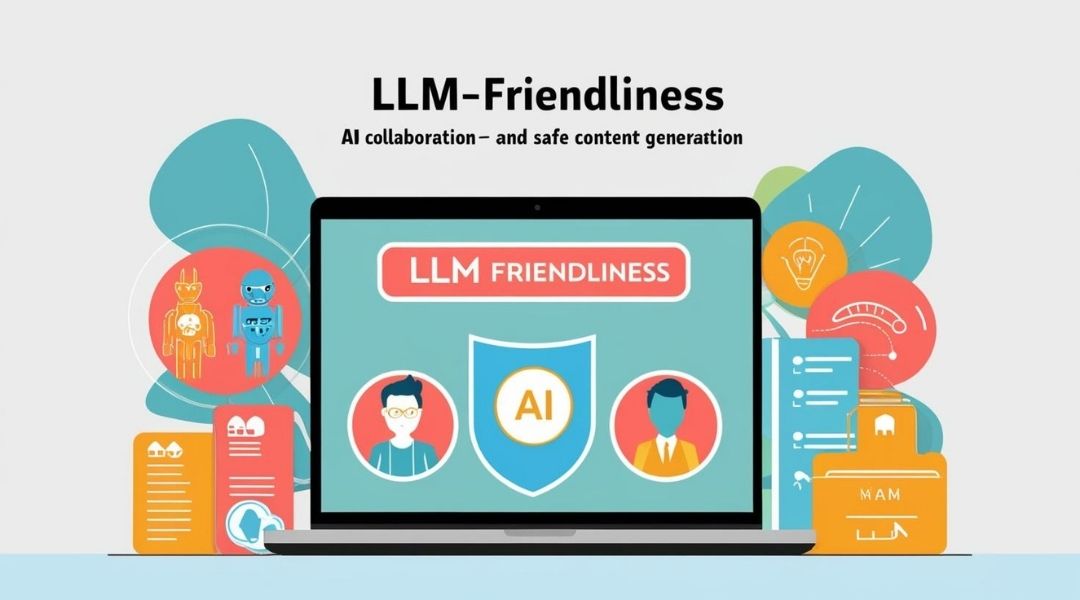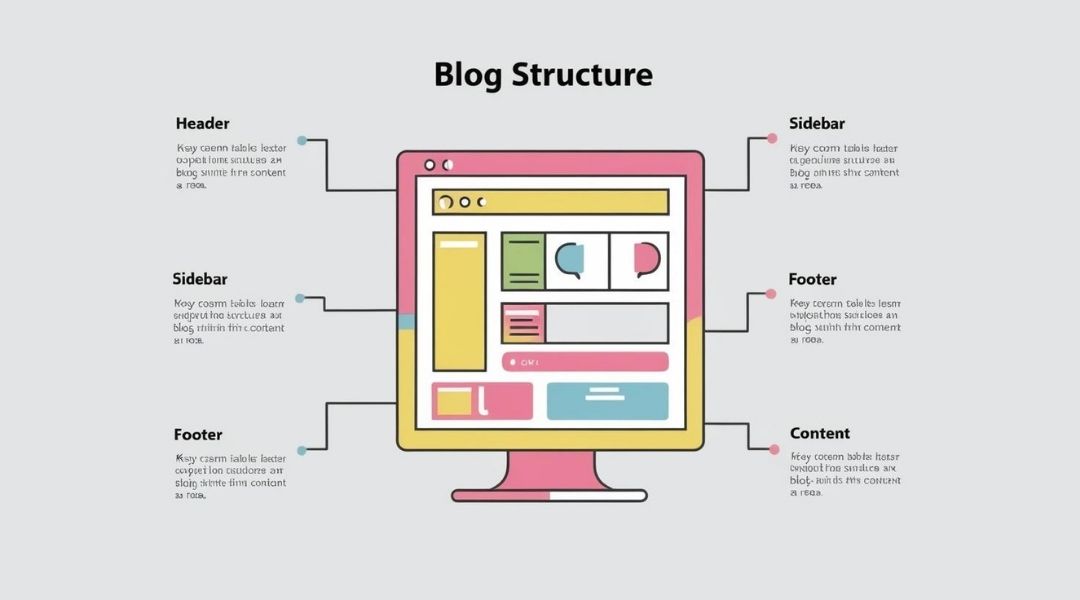Ready for better search results and a more responsive AI? Then it’s time to ensure your content is LLM-friendly. As large language models (LLMs) like ChatGPT, Claude, Gemini, and others play a growing role in search and content discovery, structuring your writing for both human readers and machine comprehension is essential.
Creating LLM-optimized content involves clear structure, purposeful keyword integration, and reliable metadata. Improved readability and increased user trust directly impact content performance; a clear, credible message gets results. To begin, start by refining your content structure for clarity—this sets a solid foundation for everything that follows.
Optimize Content Structure for Clarity
Structure your material so readers can absorb ideas quickly. Start by grouping sentences around a single theme. This approach boosts flow and helps them see valuable facts fast.
Consider adding short transitions between sections to guide them smoothly from one point to the next. Each section should focus on only one concept. That way, your message remains direct, and readers avoid confusion.
Aim for consistent formatting, making sure paragraphs have a clear order of ideas. You can also highlight vital points by using bold text. This method increases visibility and saves readers’ time.
Informative but simple layouts respect users’ limited attention spans. They also help with better indexing by search engines.
Focus on Concise and Relevant Headlines
You promote clarity in search results by writing direct headlines that reflect your content truthfully. You build trust by steering away from clickbait that withholds key facts or teases mysteries.
- You can apply AI insights to rework vague headlines into statements that boost your rank. This reduces confusion and saves readers’ time while maintaining clarity. Headlines that share clearer details can boost search visibility across diverse audiences.
- Readers seek useful highlights, so you should avoid phrasing that hides facts. Each headline should reveal core details without draining interest. Transparent titles can often significantly reduce bounce rates by 15%.
- AI-based tools such as rewriting features help refine your approach. You decide if the output meets your standards, and then you maintain control. A balanced strategy fosters trust and drives better engagement.
Incorporate Keywords Without Overstuffing Them
Inserting relevant keywords properly helps boost your SEO ranking. You should balance them with your writing flow to avoid overuse. Aim for user-friendly phrases that fit naturally in headings, subheadings, and paragraphs.
One or two keyword phrases per post is enough. Overstuffing keywords can lower your SEO score. Rely on research tools to find words that align with your blog’s topic.
Employ synonyms or related phrases, known as LSI terms, to expand your coverage. Integrate them early and late in your content to appeal to search engines. Each mention should add clarity rather than look forced.
You can also tweak image file names to match your target terms. Focus on relevance to enhance visibility. Stay consistent with these steps and see better results from your SEO efforts.
Leverage Bullet Points and Short Paragraphs
You boost readability by using bullet points and short paragraphs. This strategy can also attract better engagement from LLMs and human readers.
- Short Bursts of Information: You make content easier to scan when you break it into short segments. User tests show higher retention when ideas are presented in concise chunks. LLMs also find structured lists clearer for context extraction. More direct formatting improves your overall SEO impact.
- Easy Skimming for Busy Readers: You cater to readers with limited time by offering quick highlights. Short bullet points draw attention to core details fast. Studies indicate improved comprehension when text is parsed into smaller portions. This choice also fits well with AI parsing for user-focused results.
- Better Flow and Organization: You keep data consistent by grouping. Readers follow your message without confusion. Blocks of text reduce search visibility. Aim for straightforward paragraphs and lists.
Align Tone with Your Target Audience’s Needs
Your brand’s tone influences how readers perceive your content. It signals your values and sets you apart. Readers want familiarity, so apply a consistent voice that fits their expectations.
When your tone reflects their interests, they connect more deeply. You can define your brand’s voice by listing traits that reflect your purpose. Use these traits to guide word choice, style, and overall approach.
If your business advocates sustainable living, highlight eco practices in each post. Responses from your audience will show if you have achieved a genuine match. A brand that aligns its tone with audience preferences tends to see higher engagement.
Surveys, analytics, and feedback can measure success. Tracking numbers help you refine your approach, leading to more authentic relationships with readers. Positive emotions can encourage trust and loyalty.
Include Contextual Links in Your Writing
- Highlight Relevance: You guide readers to GPT-4 sources that show modern content generation methods. Add anchor text pointing users to official sources and case studies. Readers gain direct access to details that spark more ideas. Linking lifts your content’s value and leads to stronger SEO results.
- Support Credibility: Include references on GPT-4’s versatility in content creation. When readers see evidence, they trust your advice more. Cite real results from businesses using generative AI apps to save time. Contextual links boost your claims and guide readers to tangible proof.
- Boost Engagement: Direct your audience to translations or localized content for diverse readers. LLMs adapt text for cultural nuances across hundreds of supported languages. These links clearly show your global approach and invite more engagement. You build trust by weaving data into your text and guiding visitors helpfully.
Ensure Metadata Reflects Intent Accurately
Accurate and detailed metadata shows your content’s meaning to AI. You continuously boost audience trust by reflecting each tag’s entirely correct purpose.
- LLM Clarity: Context from reliable metadata strongly refines your model’s interpretation. Weak or missing metadata tags disrupt coherent outcomes. Location fields greatly clarify where each entry belongs. This approach reduces guesswork and boosts overall consistency.
- Photo Queries: Modern phones capture timestamps and device details automatically. These hidden fields instantly let you quickly filter images. This method efficiently allows relevant searching by place or date. That same logic applies when tagging your digital text.
- Full Context: Teams frequently generate valuable column-level metadata in routine workflows. That detail always clearly clarifies relationships and refines model precision. Smaller LLMs gain accuracy via metadata. That ensures consistent results.
Use High-Quality Images With Alt Text Tags
Images enrich your page by adding appeal that helps users gain a quick visual cue. You also need thoughtful alt text that captures each image’s key detail and aids clarity.
- You keep each alt text under two lines to maintain a concise, direct focus. It outlines the main subject without extra fluff or pointless description, boosting accessibility and readability. That approach assists screen readers while effectively helping search engines understand and rank your images.
- You skip filler phrases like “image of” or “picture of.” If the file is a painting, mention that. You also avoid repeating nearby text.
- You describe the main purpose and label it as an icon, photo, or illustration. This helps users know what they see and how it functions. End your alt text with a period.
Regularly Update Outdated or Confusing Information
You should revisit pages that mention past events or figures who have changed roles. A known example involves an AI listing a politician as alive. That happened after reports of his death.
This kind of inaccuracy affects reader trust and rating standards. Items like that emphasize the importance of thorough updates. The BBC flagged multiple errors in AI outputs, calling them too subjective or inaccurate.
Such feedback shows how crucial refreshed details can be. Your public image depends on consistent accuracy. Search engines also favor pages that reflect the latest information.
When you spot ambiguous data, correct it right away. Factual consistency boosts credibility with readers and ranking algorithms. Regular tweaks keep your writing aligned with ongoing events.
That helps set a standard for quality. This practice strengthens your reputation.
Crafting LLM-friendly text fosters readability and engagement. Style choices like short paragraphs help people skim on a crowded train. Peppering in data points, like 73% of readers preferring crisp language, strengthens trust.
Add bits of personality: mention that moment you tested a new app at midnight just because you were curious. Simple transitions keep things flowing with ease. Check for easy vocabulary, straightforward phrasing, and a dash of humor.
When you refine grammar and syntax, machine models respond accurately. Keep shining, keep adapting, and always keep writing content that clicks.
To go even further, incorporate tools that provide real-time feedback on clarity and keyword usage. Many AI platforms now offer plug-ins or extensions to integrate directly into your writing process, highlighting missed opportunities to improve structure and metadata.
The journey to crafting LLM-optimized content isn’t about replacing human creativity. It’s about elevating your writing to resonate better with both real readers and intelligent systems. This dual harmony is what drives higher visibility, lower bounce rates, and a truly future-ready content strategy.
Your words matter—make sure they are optimized not only for today’s readers but for tomorrow’s machines. That commitment to clarity, structure, and authenticity is what ultimately builds lasting trust in an increasingly AI-aware world.









